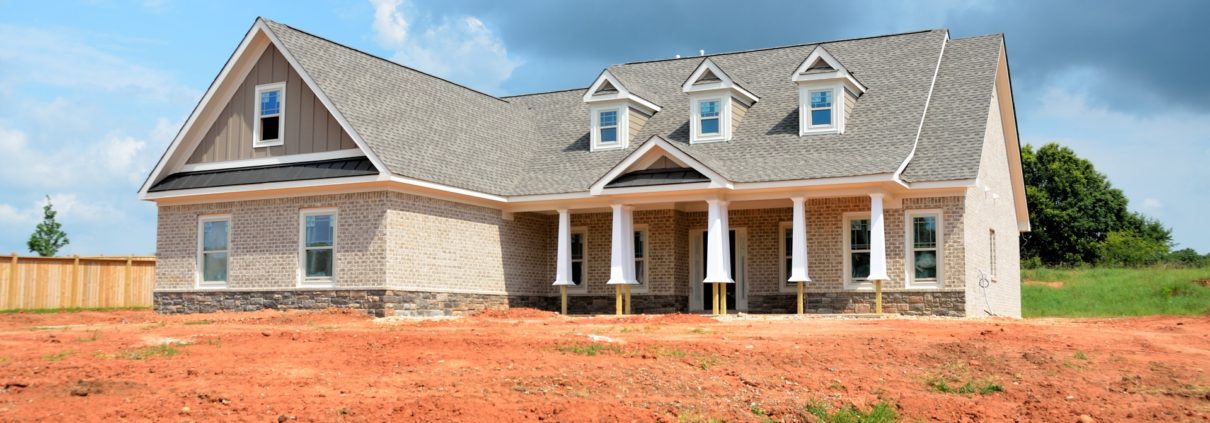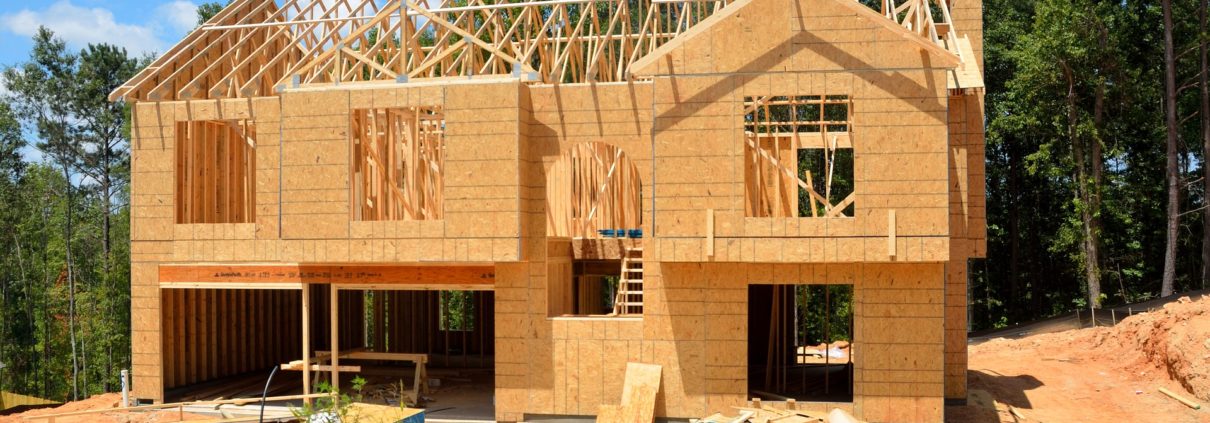Northeast land values and trends in residential land sales: What has happened and can we see the future? I have been a practicing REALTOR® for thirty-eight years. I started selling real estate while in college and never looked back. My primary market is thirty-five miles west of Boston. The state of Massachusetts is really divided into these parts: Route 128 and inside, Route 495, both sides, to Route 128 and Worcester east to 495; and, then, Western Massachusetts. Massachusetts has a myriad of permits and land use regulations which are some of the most restrictive in the country, in my opinion.
As a young REALTOR® starting out, I did all types of land sales. My marketplace was dotted with family farms. Most of these, as a teenager, I would hunt, fish, and drink beer on (of course with land owner approval, or one of their sons / daughters in tow). When asked to write this, I thought of what story would be best to tell. The approach I’m taking will, hopefully, be applicable across into your marketplace.
In the late 1970s and the early 1980s, land could be bought for forty-five dollars per lot as an Approval Not Required Under Subdivision Control (ANR) lot. An “ANR lot” means that the lot complies with the dimensional requirements for public way frontage and the required minimum lot size. For backland, you could buy a forty-acre piece in the “raw” for ten thousand dollars per lot. Once under contract, you could begin the necessary permitting. The rule of thumb in practice at that time was that twenty percent of the land tract had to be given up to regulatory prescription; in this case, eliminating eight acres.
 At that time, my thoughts were that the entire regulatory morass was put on the landowner to the community’s benefit. Alas, to this day, I still feel the same. New homes were being built for fifty dollars per square foot, the lot included. A finished two-thousand square foot colonial was one hundred thousand dollars, or thereabouts. During the early 1980s, we had an escalating economy and prices on homes and land were rising dramatically. The state of Massachusetts started buying the developmental rights to family farms and paying them not to build, but to continue to farm. In Northborough, two of the biggest farms on the highest point in town, overlooking the new 1974 I-290 highway, were bought. Over five-hundred acres were kept from development and, until this day, serve as a reminder of why some regulations are necessary.
At that time, my thoughts were that the entire regulatory morass was put on the landowner to the community’s benefit. Alas, to this day, I still feel the same. New homes were being built for fifty dollars per square foot, the lot included. A finished two-thousand square foot colonial was one hundred thousand dollars, or thereabouts. During the early 1980s, we had an escalating economy and prices on homes and land were rising dramatically. The state of Massachusetts started buying the developmental rights to family farms and paying them not to build, but to continue to farm. In Northborough, two of the biggest farms on the highest point in town, overlooking the new 1974 I-290 highway, were bought. Over five-hundred acres were kept from development and, until this day, serve as a reminder of why some regulations are necessary.
In addition, a certain amount of lots were allowed to be kept for family members in the future. Now, the third and fourth generations of farmers have their homes here and a vibrant farm business has grown, and keeps growing. In 1987, Massachusetts had a banner year selling farms at a price of forty-thousand dollars per lot in the raw while an ANR lot ran about seventy-five thousand dollars each. Then, we had a market adjustment and the local economy all across the Northeast was hit with a slowdown. It was during this time of slow, or no, growth that the regulations were revamped and revised to “protect” the environment and the school district. Zoning referendums were created and placed from community to community, as each town had different and more onerous restrictions in place. From aquifer laws, contiguous uplands, and open space as a minimum fifty percent, to revisions of soil standards, increasing sizes of subdivision roads, and increased setbacks. All of these regulations put a severe crimp on land values.
Despite tremendous efforts by landowners, builders, and REALTORS®, these regulations are now a way of life, to this day, in all our urban areas. When the “powers that be” implement new zoning, it has a tremendous effect on land values. In the mid-1990s, another piece was passed known as The Rivers Bill. This bill precluded development within two hundred feet of any listed stream and tributary in the Commonwealth of Massachusetts. Some of those listed were two feet wide at maximum and the only relief was if it dried up for three or more consecutive days so could you film it.
Now, we have arrived in the late 1990s. With ANR lots at $110 per lot and raw land at sixty thousand dollars per lot, finished two thousand square foot homes are sold from $350 to $375 thousand (or around $175 per square foot) all in, inclusive of land. The builders then decided that in order to make money and increase their corporate financing, they would build bigger homes. Starting in late 1999, prices rose and house sizes were 2,800 to 3,200 square feet. Around this time, I did a seventy-lot former gravel pit, where pricing ran from $399 thousand for a 2,700 square foot colonial to $475 thousand for a 3,400 square foot colonial. Now, twenty years later, those resales sell for $680 to $800 thousand with no new lots in sight. In my primary area, we have reached build out. There are no longer any fifty to one hundred lot subdivisions, only five to ten lot ones are available from the I-495 area eastward to the sea line of Boston.
 In addition, for the last ten years, builders have taken advantage of a law in Massachusetts called Chapter 40B. This law was created in 1969 to increase affordable housing throughout the Commonwealth. However, it did not get any traction until 2005 or so. This law allowed for an increased maximum density for apartments, as long as twenty-five percent of the units were for people who meet the affordable income limits as defined by the State of Massachusetts. Thousands and thousands of apartments have sprinkled the highways and byways, as this law allows you to bypass local planning boards and apply directly to the State.
In addition, for the last ten years, builders have taken advantage of a law in Massachusetts called Chapter 40B. This law was created in 1969 to increase affordable housing throughout the Commonwealth. However, it did not get any traction until 2005 or so. This law allowed for an increased maximum density for apartments, as long as twenty-five percent of the units were for people who meet the affordable income limits as defined by the State of Massachusetts. Thousands and thousands of apartments have sprinkled the highways and byways, as this law allows you to bypass local planning boards and apply directly to the State.
While many benefits are apparent, the adverse impact comes on the older two to four family units as they have to compete with sleek new more modern apartments offering dry cleaning services, gyms, pools, and all the other upscale benefits. Demographics within these units are primarily young urban singles or couples, with older divorcees, and a transient population waiting for newer homes in the Central Massachusetts market. Many are buying duplex halves and, now, the communities are putting moratoriums in place as more and more of these units are built. These two thousand square foot duplex halves are selling in the mid to high four hundreds.
However, no one realizes, except the REALTORS®, how the marketplace has changed. The millennials prefer new construction. Most don’t want to have to change storm windows or paint their new homes. They just want to live in a new home with little or no exterior maintenance so they may enjoy their free time. Yet these communities who have implemented moratoriums are crimping their ability to buy new, and restricting the value of the land owners’ equity. You can still buy an ANR lot in western Massachusetts under one hundred thousand dollars, but the access to corporate headquarters and city services is a day trip away.
As for the rest of the Northeast, in every major urban area within thirty-five miles of an airport or big city, land prices and residential land sales tell the same story. Land prices are escalating higher and higher to the point of spiraling out of control. Installing new roads are costing a thousand dollars per linear foot. Remember the seventy lots in Northborough neighborhood? Well, I just sold the eighty-one year old owners last remaining four acres for one million dollars and the builder is getting five ANR lots. Homes of three thousand square feet will start at $750 thousand and we expect them to all sell upon release.
What a difference three decades make. When I attend the RLI meetings I hear similar stories from across the country and realize the truth in the phrase that “The Land Is Under All,” and it’s our duty to protect private property rights. By virtue of our profession, the duty falls on all REALTORS® to fight restrictive zoning and ensure that our elders can retire with the equity they expect and deserve. All of us in the business of buying and selling real estate have an obligation to participate in the public process for new zoning. We have an obligation to be cognizant of all underlying land use and we must defend and protect the ability to adapt our land use to meet the new requirements of the marketplace and the next generation.
For more information on land value trends and residential land sales, check out RLI’s annual Land Markets Survey. Read more on the demand for land and the increase in demand for residential land real estate.
This article originally appeared in the 2017 Summer Terra Firma Magazine, the official publication of the REALTORS® Land Institute.
 About the author: Michael L Durkin, ALC, CBR, has been recognized as one of the Top REALTORS® in the country by many of the major companies: Top 300 Coldwell Banker; Top 10 GMAC Real Estate; and Top 80 RE/MAX. He has twenty-five years’ experience in his office and is an author and former radio host for WTAG. He has served on the NAR Land Use and Property Rights Committee for a total of ten years.
About the author: Michael L Durkin, ALC, CBR, has been recognized as one of the Top REALTORS® in the country by many of the major companies: Top 300 Coldwell Banker; Top 10 GMAC Real Estate; and Top 80 RE/MAX. He has twenty-five years’ experience in his office and is an author and former radio host for WTAG. He has served on the NAR Land Use and Property Rights Committee for a total of ten years.
 is the Membership and Communications Specialist for the REALTORS® Land Institute. She graduated from Clark University in May 2017 and has been with RLI since October 2017.
is the Membership and Communications Specialist for the REALTORS® Land Institute. She graduated from Clark University in May 2017 and has been with RLI since October 2017.


 At that time, my thoughts were that the entire regulatory morass was put on the landowner to the community’s benefit. Alas, to this day, I still feel the same. New homes were being built for fifty dollars per square foot, the lot included. A finished two-thousand square foot colonial was one hundred thousand dollars, or thereabouts. During the early 1980s, we had an escalating economy and prices on homes and land were rising dramatically. The state of Massachusetts started buying the developmental rights to family farms and paying them not to build, but to continue to farm. In Northborough, two of the biggest farms on the highest point in town, overlooking the new 1974 I-290 highway, were bought. Over five-hundred acres were kept from development and, until this day, serve as a reminder of why some regulations are necessary.
At that time, my thoughts were that the entire regulatory morass was put on the landowner to the community’s benefit. Alas, to this day, I still feel the same. New homes were being built for fifty dollars per square foot, the lot included. A finished two-thousand square foot colonial was one hundred thousand dollars, or thereabouts. During the early 1980s, we had an escalating economy and prices on homes and land were rising dramatically. The state of Massachusetts started buying the developmental rights to family farms and paying them not to build, but to continue to farm. In Northborough, two of the biggest farms on the highest point in town, overlooking the new 1974 I-290 highway, were bought. Over five-hundred acres were kept from development and, until this day, serve as a reminder of why some regulations are necessary. In addition, for the last ten years, builders have taken advantage of a law in Massachusetts called Chapter 40B. This law was created in 1969 to increase affordable housing throughout the Commonwealth. However, it did not get any traction until 2005 or so. This law allowed for an increased maximum density for apartments, as long as twenty-five percent of the units were for people who meet the affordable income limits as defined by the State of Massachusetts. Thousands and thousands of apartments have sprinkled the highways and byways, as this law allows you to bypass local planning boards and apply directly to the State.
In addition, for the last ten years, builders have taken advantage of a law in Massachusetts called Chapter 40B. This law was created in 1969 to increase affordable housing throughout the Commonwealth. However, it did not get any traction until 2005 or so. This law allowed for an increased maximum density for apartments, as long as twenty-five percent of the units were for people who meet the affordable income limits as defined by the State of Massachusetts. Thousands and thousands of apartments have sprinkled the highways and byways, as this law allows you to bypass local planning boards and apply directly to the State. About the author:
About the author: 
 About the author: Jessa Friedrich, MBA, is the Marketing Manager for the REALTORS® Land Institute. Jessa has a Bachelor of Science with a dual major in Business Administration and Marketing as well as a Masters of Business Administration in Marketing with a specialization in Social Media. She has been with RLI in the land real estate industry for two and a half years and manages all matters pertaining to marketing and communications for the organization. In her role, she is dedicated to promoting and enhancing the
About the author: Jessa Friedrich, MBA, is the Marketing Manager for the REALTORS® Land Institute. Jessa has a Bachelor of Science with a dual major in Business Administration and Marketing as well as a Masters of Business Administration in Marketing with a specialization in Social Media. She has been with RLI in the land real estate industry for two and a half years and manages all matters pertaining to marketing and communications for the organization. In her role, she is dedicated to promoting and enhancing the